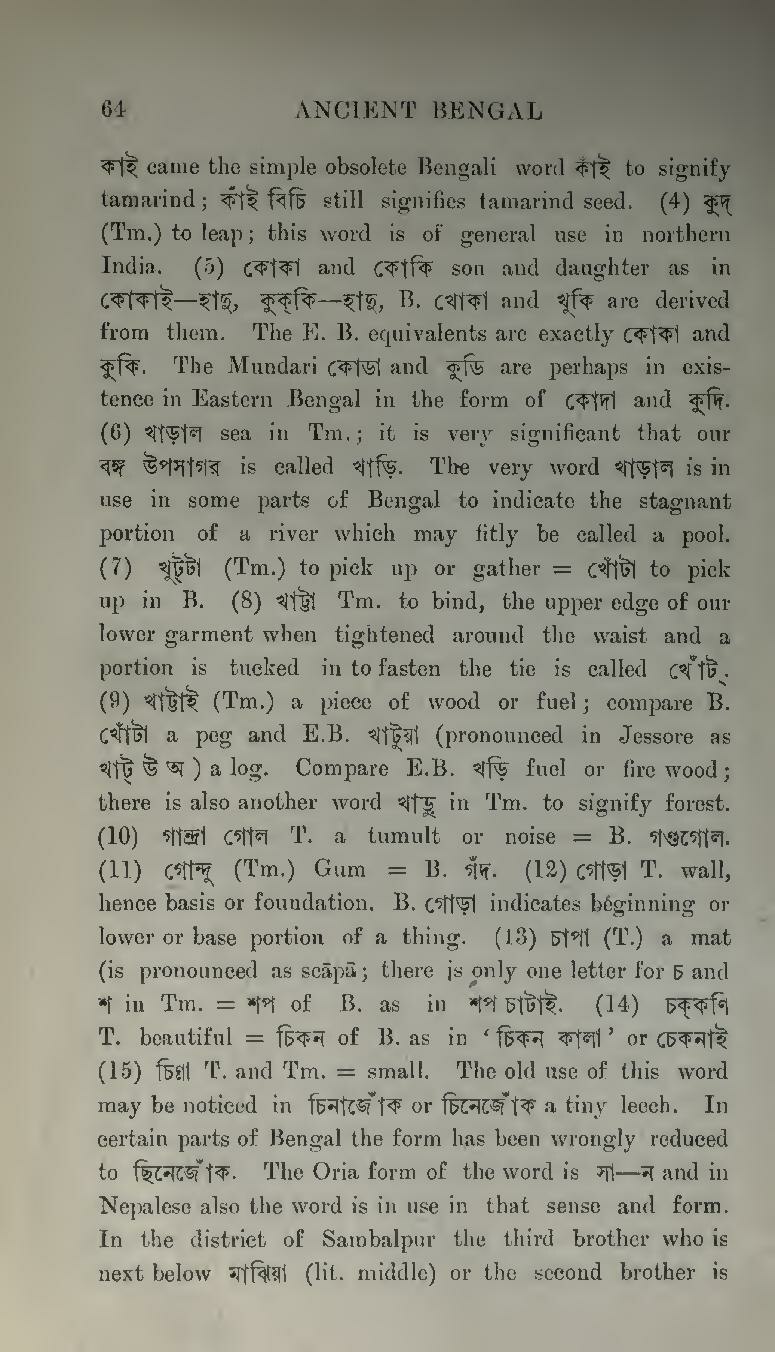কাই came the simple obsolete Bengali word কাঁই to signify tamarind; কাঁই বিচি still signifies tamarind seed. (4) কুদ্ (Tm.) to leap; this word is of general use in northern India. (5) কোকা and কোকি son and daughter as in কোকাই—হাদু, কুক্কি—হাদু, B. খোকা and খুকি are derived from them. The E. B. equivalents are exactly কোকা and কুকি. The Mundari কোডা and কুডি are perhaps in existence in Eastern Bengal in the form of কোদা and কুদি. (6) খাড়াল sea in Tm.; it is very significant that our বঙ্গ উপসাগর is called খাড়ি. The very word খাড়াল is in use in some parts of Bengal to indicate the stagnant portion of a river which may fitly be called a pool. (7) খুট্টা (Tm.) to pick up or gather = খোঁটা to pick up in B. (8) খাট্টা Tm. to bind, the upper edge of our lower garment when tightened around the waist and a portion is tucked in to fasten the tie is called খোঁট্. (9) খাট্টাই (Tm.) a piece of wood or fuel; compare B. খোঁটা a peg and E.B. খাটুয়া (pronounced in Jessore as খাট্ উ অ) a log. Compare E.B. খড়ি fuel or fire wood; there is also another word খাড়ু in Tm. to signify forest. (10) গান্দ্রা গোল T. a tumult or noise = B. গণ্ডগোল. (11) গোন্দু (Tm.) Gum = B. গঁদ. (12) গোড়া T. wall, hence basis or foundation. B. গোড়া indicates beginning or lower or base portion of a thing. (13) চাপা (T.) a mat (is pronounced as scāpā; there is only one letter for চ and শ in Tm. = শপ of B. as শপ চাটাই. (14) চক্কণি T. beautiful = চিকন of B. as in 'চিকন কালা' or চেকনাই (15) চিণ্ণা T. and Tm. = small. The old use of this word may be noticed in চিনাজোঁক or চিনেজোঁক a tiny leech. In certain parts of Bengal the form has been wrongly reduced to ছিনেজোঁক. The Oria form of the word is সা—ন and in Nepalese also the word is in use in that sense and form. In the district of Sambalpur the third brother who is next below মাঝিয়া (lit. middle) or the second brother is
